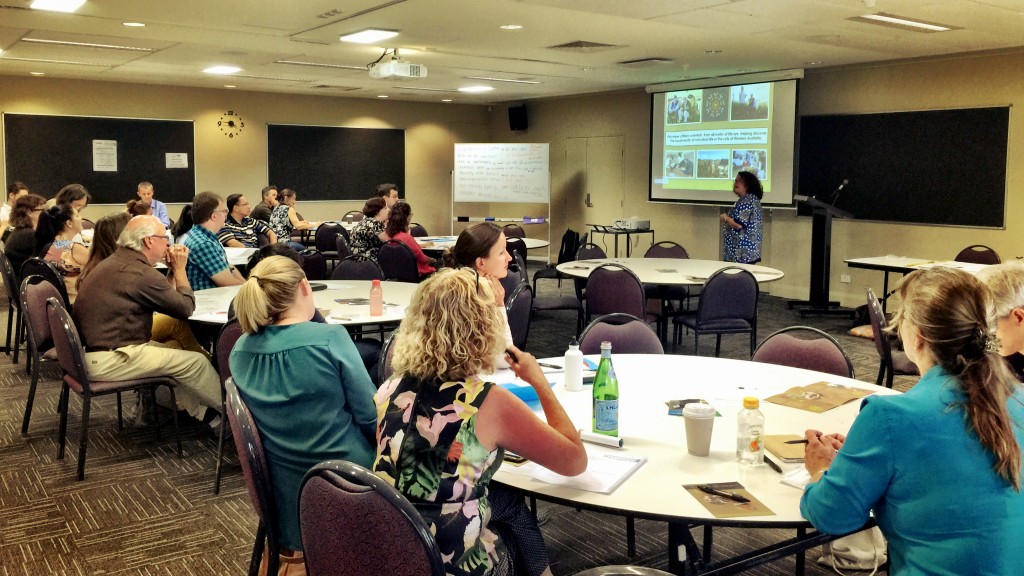Just before Easter, Gaia Resources coordinated the running of another Citizen Science workshop at the 2016 Communicate to Inspire event, run by the Australian Science Communicators and Inspiring Australia.
The workshop was aimed to talk about the one thing we have found most important in a successful citizen science project – engagement. Rather than focusing on technology, we instead concentrated on the engagement side and asked along three excellent science communicators with successful citizen science projects to talk through their experiences with engagement.
Firstly, Piers gave a brief overview of Citizen Science issues with some insights from his recent participation in Inspiring Australia’s Citizen Science Forum (and the accompanying workshop we ran) in Brisbane – you can read more about this past event in a previous blog post.
Piers’ introductory slides are embedded above (download a PDF here)
Following on from that, Deborah Bowie (MicroBlitz Project Manager, UWA) talked about her project and successful engagement strategies with respect to publicity and the STARS program for providing academic recognition of student engagement in public programs.
Sabrina Trocini (Project Coordinator for the Rakali Community Survey, WWF Australia) then spoke on her project with a focus on direct engagement and community engagement strategies for (non-)charismatic subjects – although everyone agreed that the Rakali was pretty darn cute – “Australia’s Otter” as she called it.
The talk component was wrapped up by Tegan Douglas (Project Coordinator for Cockies in Crisis, BirdLife WA) who introduced her subject with a focus on issues around ongoing engagement and managing both presence and absence record data.
Deborah Bowie talking about MicroBlitz
Once the talks were complete we opened up to the floor for a Q&A session and some of the points discussed included:
- funding strategies for citizen science projects,
- the role of social media,
- examples of non-biological citizen science projects, and
- how can regions facilitate citizen science.
We also had an open session at the end where we asked audience members who were doing citizen science and had interesting examples of engagement to provide us all with an overview, and we had two great examples – the Perth Observatory Volunteers and the Mildew Mania project. These speakers provided some interesting additional observations on using strategies like podcasts, Google hangouts and engaging schools by providing outcomes from the Australian Curriculum for Science.
While we also had plans for the audience to provide additional feedback on what they use, the majority of people in the room weren’t already practicing citizen science projects, and so we didn’t get much feedback from our handouts. However, that in itself was an interesting insight that we will take forward – we are planning to put together a more in-depth review of engagement in citizen science in the future (along with the overview of mainstreaming citizen science in decision-making paper that Piers is working on from the previous workshop).
We’d really like to thank Deborah, Sabrina and Tegan for their assistance with the event, it certainly was an event we were proud to support. If you are interested in contacting us about citizen science, email me directly, leave a comment below or start a conversation on Facebook, Twitter or LinkedIn.
Alex


Comments are closed.